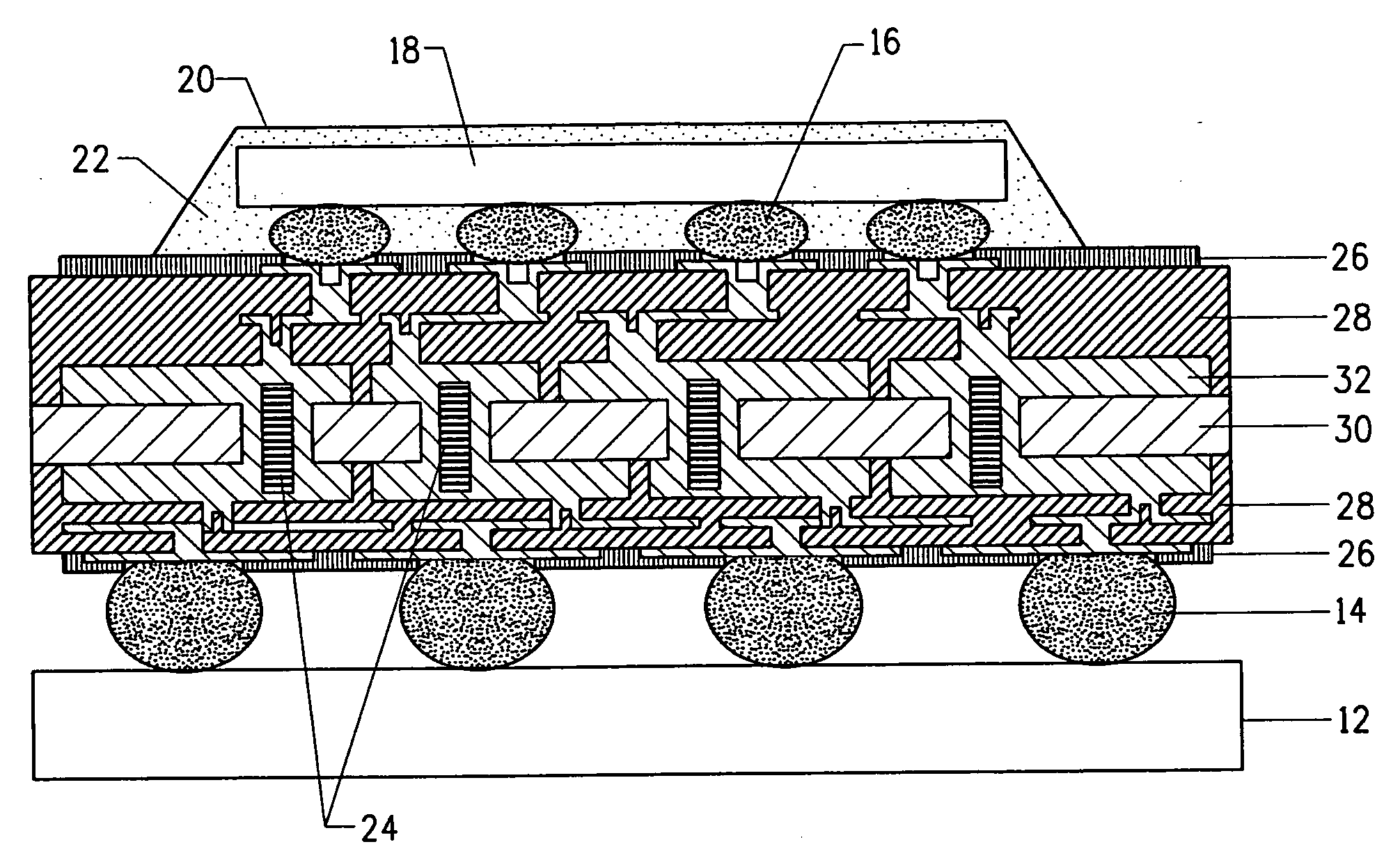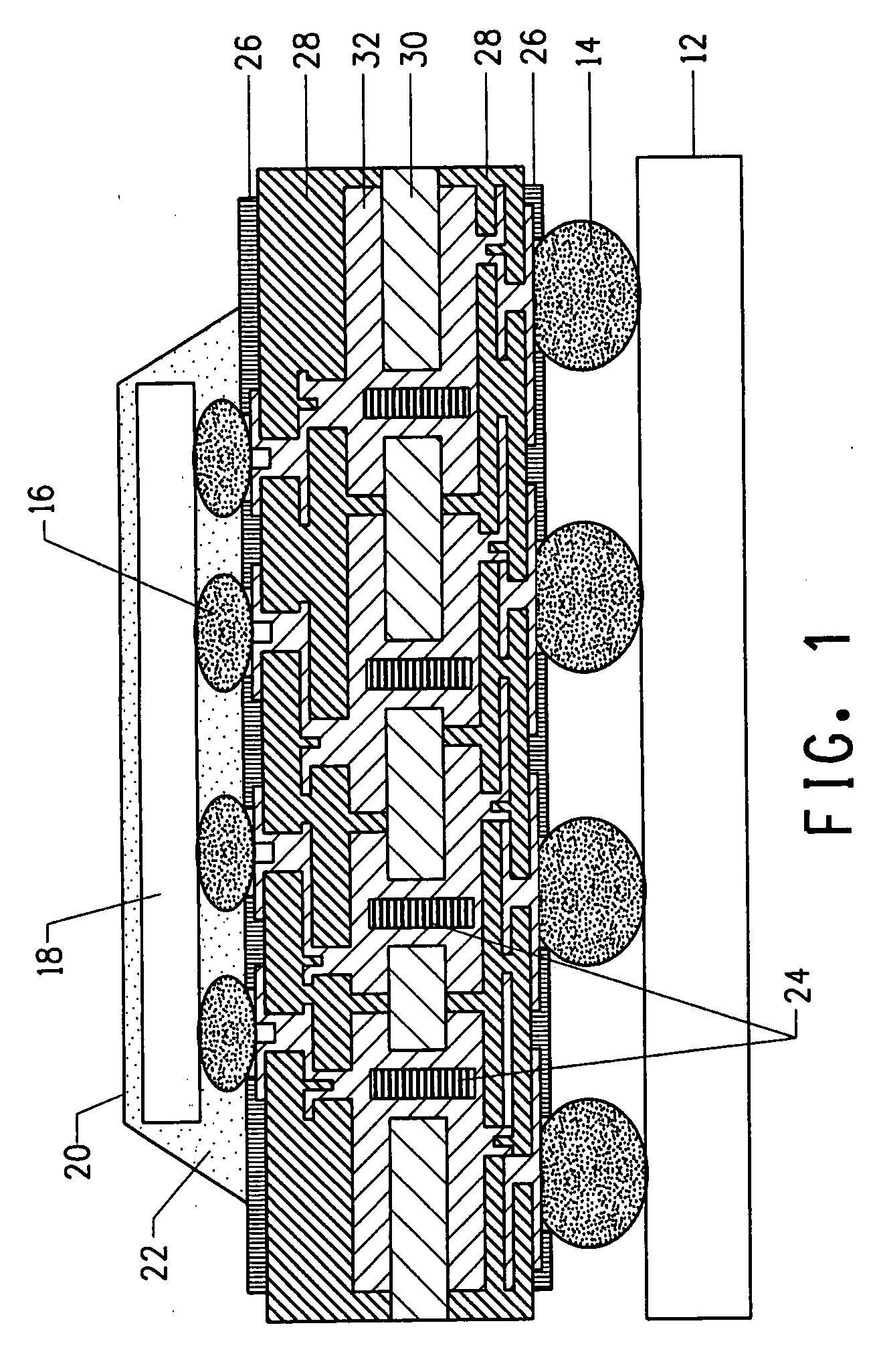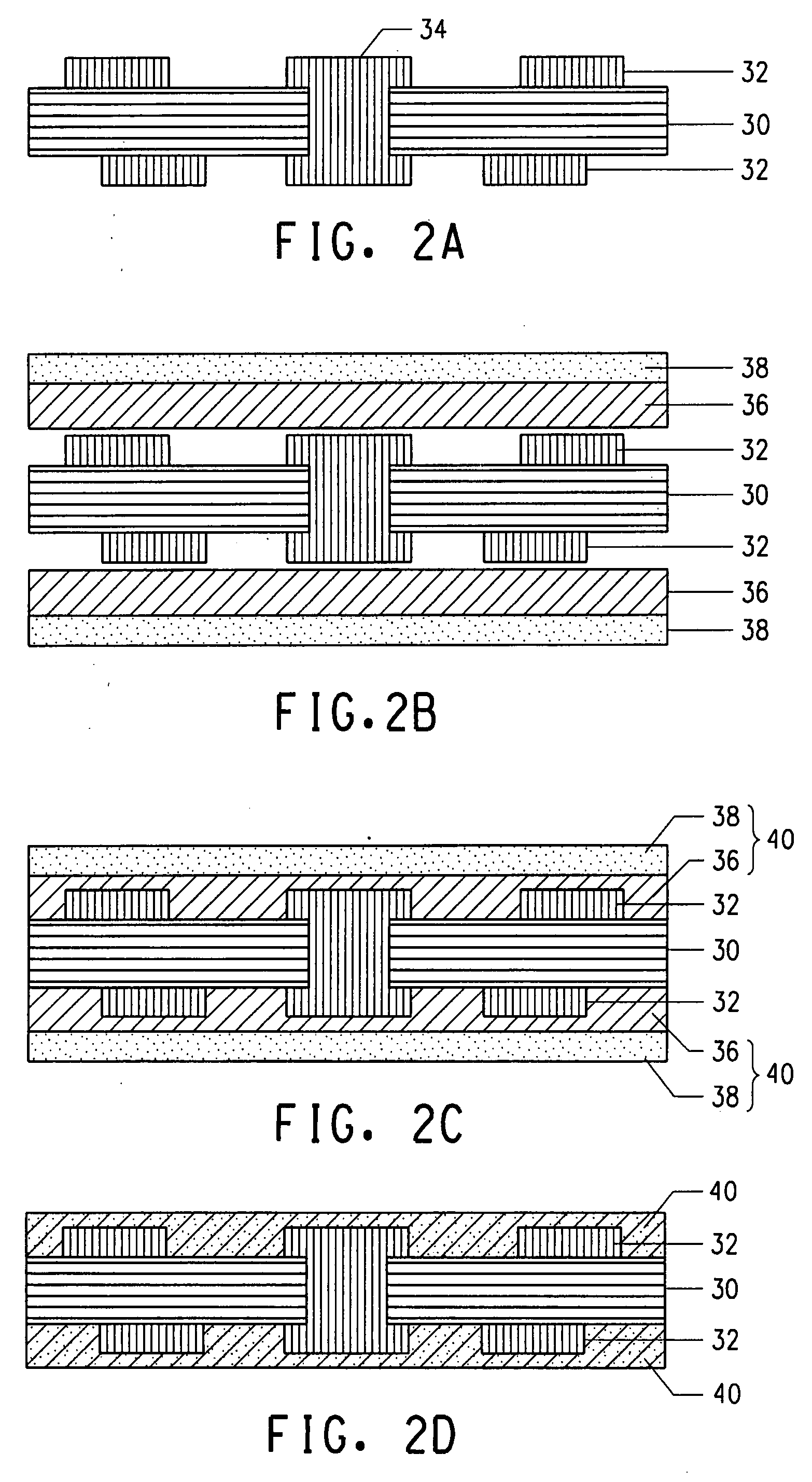Printed circuits prepared from filled epoxy compositions
a technology of epoxy composition and printed circuit, which is applied in the direction of resistive material coating, solid-state device coating, metallic material coating process, etc., can solve the problems of increased viscosity, poor adhesion strength, and increased brittleness
- Summary
- Abstract
- Description
- Claims
- Application Information
AI Technical Summary
Problems solved by technology
Method used
Image
Examples
example 1
[0081]To 21.1 g of the epoxy resin in MEK solution of Comparative Example 1 was added 29.9 g of the milled Aerosil R7200 dispersion in MEK containing 3.5 g of fumed silica and the mixture was stirred for 15 minutes. Then 3.5 g of SE1050-SEQ silica was added in the powder form_and stirred for 30 minutes. The combined dispersion was subject to ultrasonic probe mixing at room temperature for four minutes, as described supra. Then 0.0169 g of the catalyst in 10 ml MEK solution was added to the dispersion and stirred for 30 minutes.
[0082]A 2 mil (50.8 micrometer) thick coating of the dielectric composition was cast on a PET film using a Gardco Film Applicator and allowed to dry for two hours at room temperature. The remaining solution was poured into a Teflon® coated pan and allowed to dry overnight at room temperature in the laboratory hood. The isolated viscous mass placed into a 2″×2″×60 mil (5.08 cm×5.08 cm×1.5 mm)stainless mold and cured under 300 psi (2.07 MPa) pressure.
[0083]In th...
example 2
[0084]While stirring, 21.1 g of the epoxy resin composition in MEK solution previously prepared was combined with 25.6 g of the 12% solids milled Aerosil R7200 silica dispersion containing 3 g of the fumed silica. Stirring was continued for 15 minutes. Separately 4 g of Cloisite 30B was dispersed in 60 ml of MEK by stirring at room temperature for an hour. The ultrasonic probe was applied to the Cloisite dispersion so prepared for about four minutes at room temperature to facilitate the dispersion in the solvent. The Cloisite dispersion was transferred immediately to the silica and epoxy resin dispersion prepared as herein above described, and the resulting mixture was stirred using a magentic stirrer for about 30 minutes. Then 0.0169 g of the catalyst in 10 ml of MEK was added to the dispersion and stirring was continued at room temperature for about 30 minutes further.
[0085]A 2 mil (ca. 50 micrometer) thick coating of the epoxy composition so prepared was cast on a PET film and al...
example 3
[0087]The materials and procedures of Example 2 were repeated except that the Cloisite was dispersed in DMF instead of MEK. 4 g of the nanoclay was dispersed in 60 ml of dimethyl formamide (DMF) by stirring at room temperature for an hour. Then the ultrasonic probe was applied for four minutes to get a good dispersion and then the resulting dispersion was mixed with the Aerosil silica and epoxy dispersion prepared as in Example 2. The coating and cured samples for CTE measurement were made as described above.
[0088]In the dielectric flow test, both the as-laminated film and the cured laminate film were uniformly smooth and free from cracks.
[0089]The results of the CTE / Tg test are shown in Table 4
TABLE 4x-directionz-directionSolvent forCTECTEnanoclayTg (ppm / ° C.)Tg(ppm / ° C.)dispersion(° C.)(g)(>Tg)(° C.)(g)(>Tg)Example 2MEK170386814038186Example 3DMF>280353511736323
PUM
| Property | Measurement | Unit |
|---|---|---|
| Percent by mass | aaaaa | aaaaa |
| Percent by mass | aaaaa | aaaaa |
| Temperature | aaaaa | aaaaa |
Abstract
Description
Claims
Application Information
 Login to View More
Login to View More - R&D
- Intellectual Property
- Life Sciences
- Materials
- Tech Scout
- Unparalleled Data Quality
- Higher Quality Content
- 60% Fewer Hallucinations
Browse by: Latest US Patents, China's latest patents, Technical Efficacy Thesaurus, Application Domain, Technology Topic, Popular Technical Reports.
© 2025 PatSnap. All rights reserved.Legal|Privacy policy|Modern Slavery Act Transparency Statement|Sitemap|About US| Contact US: help@patsnap.com



